Detailed Accounting Systems and Processes Homework Assignment
VerifiedAdded on 2020/04/07
|29
|2058
|36
Homework Assignment
AI Summary
This document presents a comprehensive solution to an accounting systems and processes homework assignment. The solution covers various aspects of accounting, including the use of cell referencing in spreadsheets, displaying negative numbers, and separating spreadsheet areas for data entry and reporting. It delves into specific Excel functions like the IF function and explains the periodic inventory system, including how the cost of goods sold is determined. The assignment also includes practical exercises involving formula view, revised data, and the allowance method. Furthermore, the solution analyzes the Wesfarmers group, providing insights into its statement of comprehensive income, dividend payments, risk management, earnings per share, sustainability, return on equity, corporate governance, income statement, and balance sheet. It concludes with a working capital ratio calculation and investment advice for an individual named Vikram.
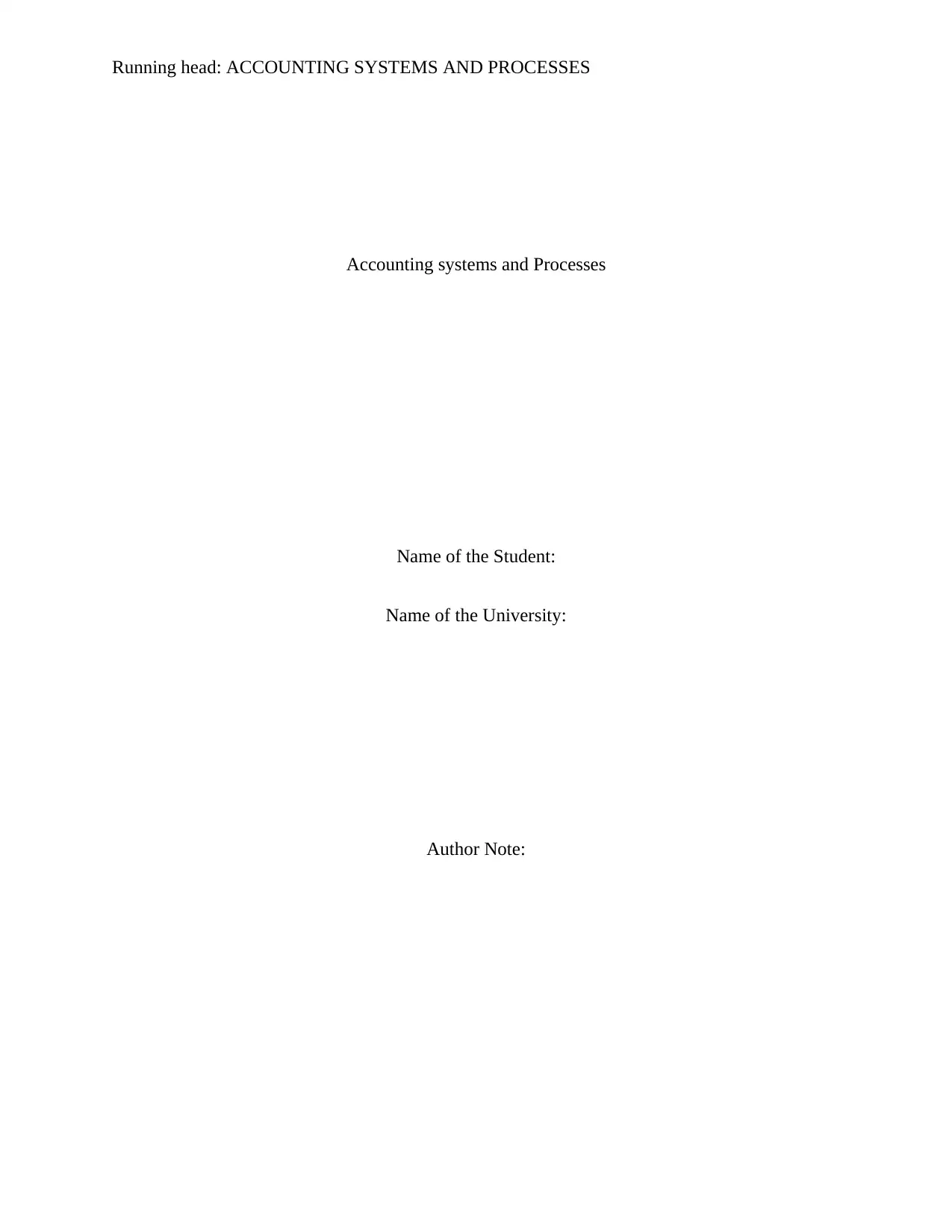
Running head: ACCOUNTING SYSTEMS AND PROCESSES
Accounting systems and Processes
Name of the Student:
Name of the University:
Author Note:
Accounting systems and Processes
Name of the Student:
Name of the University:
Author Note:
Paraphrase This Document
Need a fresh take? Get an instant paraphrase of this document with our AI Paraphraser
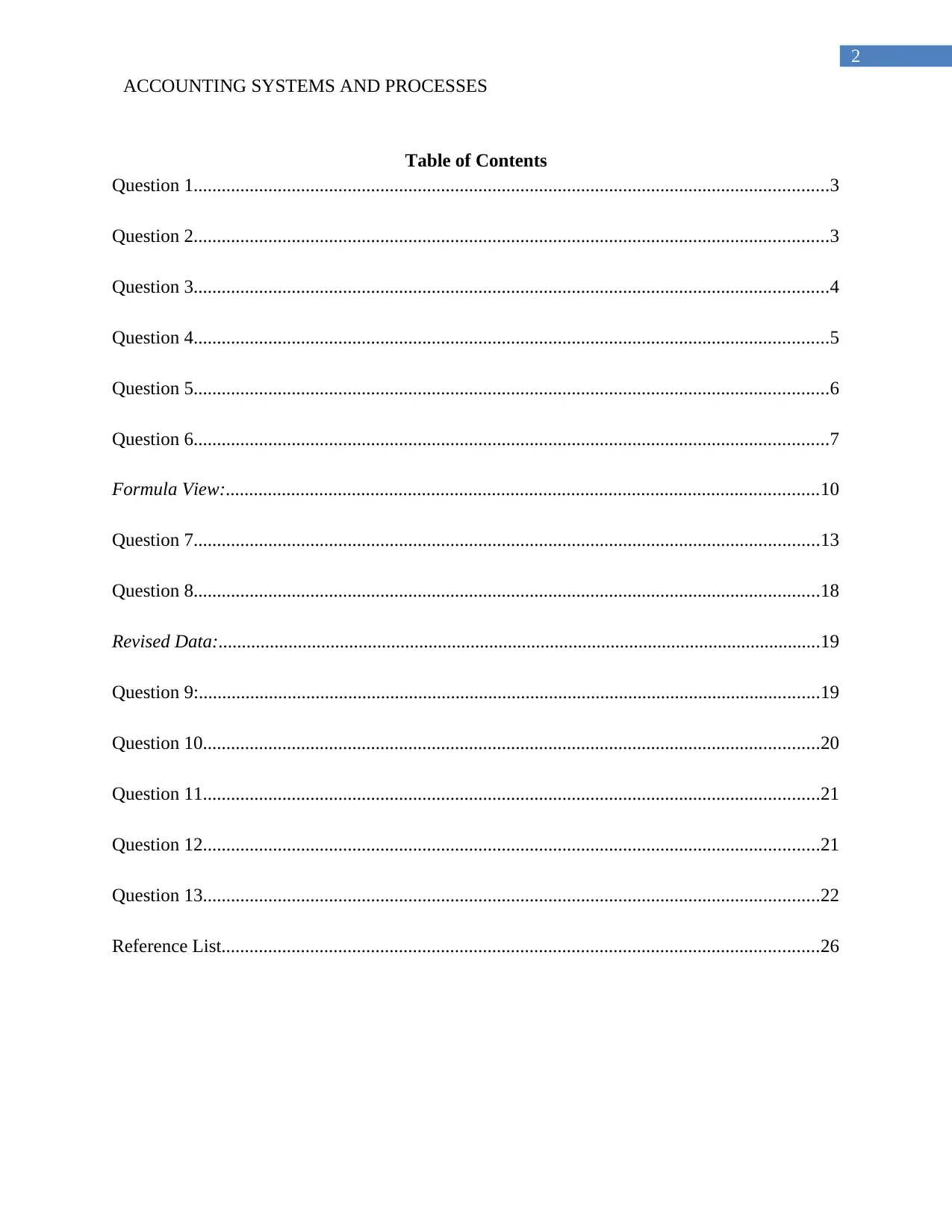
2
ACCOUNTING SYSTEMS AND PROCESSES
Table of Contents
Question 1........................................................................................................................................3
Question 2........................................................................................................................................3
Question 3........................................................................................................................................4
Question 4........................................................................................................................................5
Question 5........................................................................................................................................6
Question 6........................................................................................................................................7
Formula View:...............................................................................................................................10
Question 7......................................................................................................................................13
Question 8......................................................................................................................................18
Revised Data:.................................................................................................................................19
Question 9:.....................................................................................................................................19
Question 10....................................................................................................................................20
Question 11....................................................................................................................................21
Question 12....................................................................................................................................21
Question 13....................................................................................................................................22
Reference List................................................................................................................................26
ACCOUNTING SYSTEMS AND PROCESSES
Table of Contents
Question 1........................................................................................................................................3
Question 2........................................................................................................................................3
Question 3........................................................................................................................................4
Question 4........................................................................................................................................5
Question 5........................................................................................................................................6
Question 6........................................................................................................................................7
Formula View:...............................................................................................................................10
Question 7......................................................................................................................................13
Question 8......................................................................................................................................18
Revised Data:.................................................................................................................................19
Question 9:.....................................................................................................................................19
Question 10....................................................................................................................................20
Question 11....................................................................................................................................21
Question 12....................................................................................................................................21
Question 13....................................................................................................................................22
Reference List................................................................................................................................26
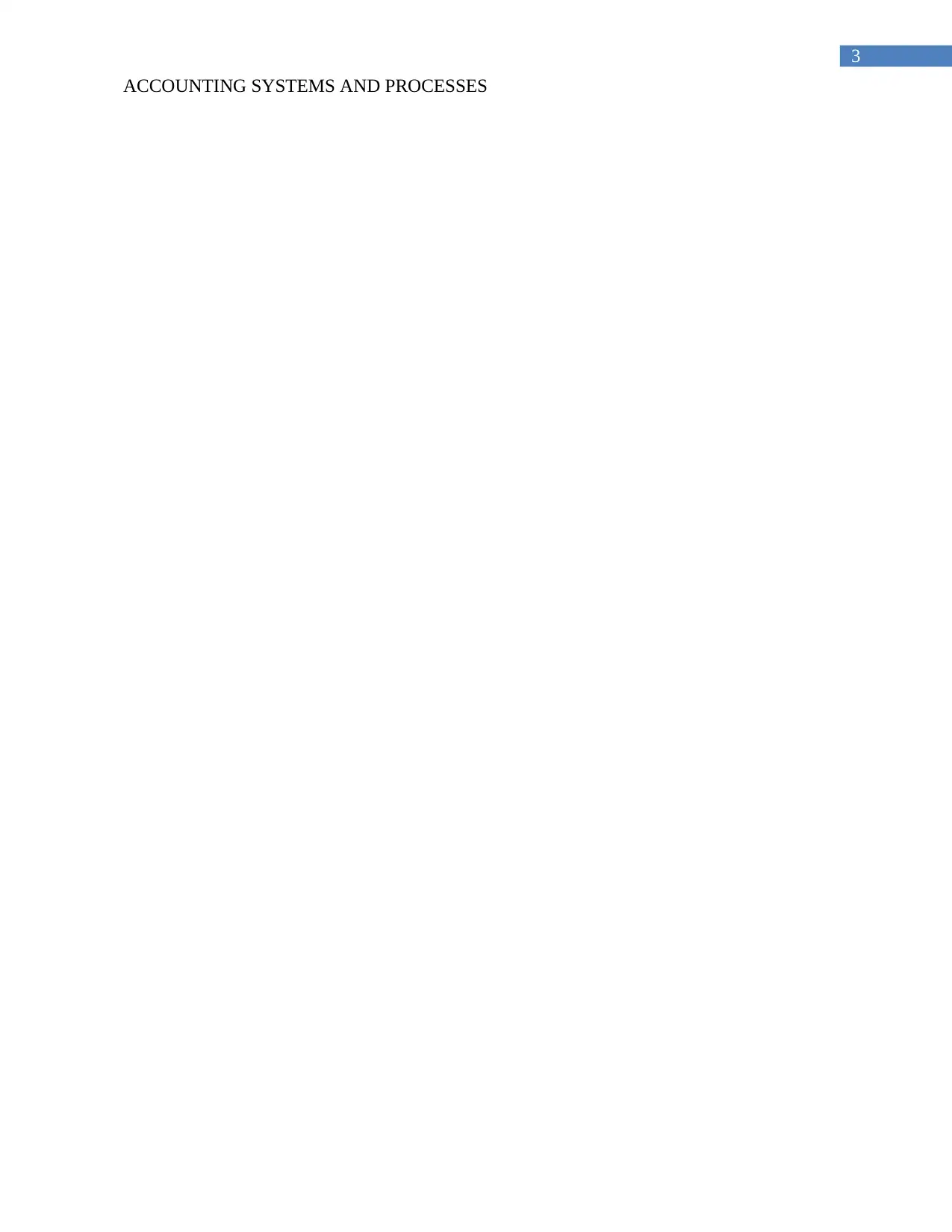
3
ACCOUNTING SYSTEMS AND PROCESSES
ACCOUNTING SYSTEMS AND PROCESSES
⊘ This is a preview!⊘
Do you want full access?
Subscribe today to unlock all pages.

Trusted by 1+ million students worldwide
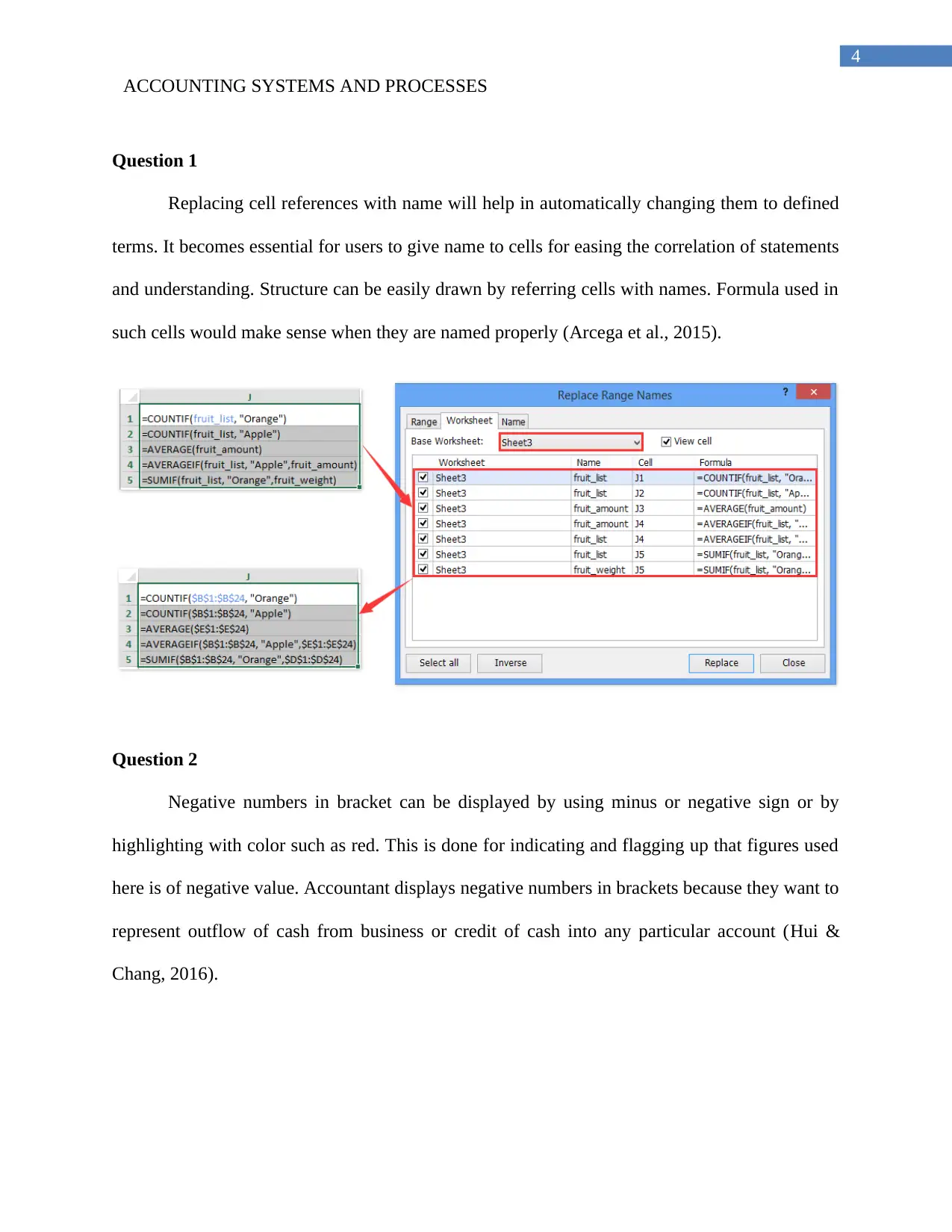
4
ACCOUNTING SYSTEMS AND PROCESSES
Question 1
Replacing cell references with name will help in automatically changing them to defined
terms. It becomes essential for users to give name to cells for easing the correlation of statements
and understanding. Structure can be easily drawn by referring cells with names. Formula used in
such cells would make sense when they are named properly (Arcega et al., 2015).
Question 2
Negative numbers in bracket can be displayed by using minus or negative sign or by
highlighting with color such as red. This is done for indicating and flagging up that figures used
here is of negative value. Accountant displays negative numbers in brackets because they want to
represent outflow of cash from business or credit of cash into any particular account (Hui &
Chang, 2016).
ACCOUNTING SYSTEMS AND PROCESSES
Question 1
Replacing cell references with name will help in automatically changing them to defined
terms. It becomes essential for users to give name to cells for easing the correlation of statements
and understanding. Structure can be easily drawn by referring cells with names. Formula used in
such cells would make sense when they are named properly (Arcega et al., 2015).
Question 2
Negative numbers in bracket can be displayed by using minus or negative sign or by
highlighting with color such as red. This is done for indicating and flagging up that figures used
here is of negative value. Accountant displays negative numbers in brackets because they want to
represent outflow of cash from business or credit of cash into any particular account (Hui &
Chang, 2016).
Paraphrase This Document
Need a fresh take? Get an instant paraphrase of this document with our AI Paraphraser
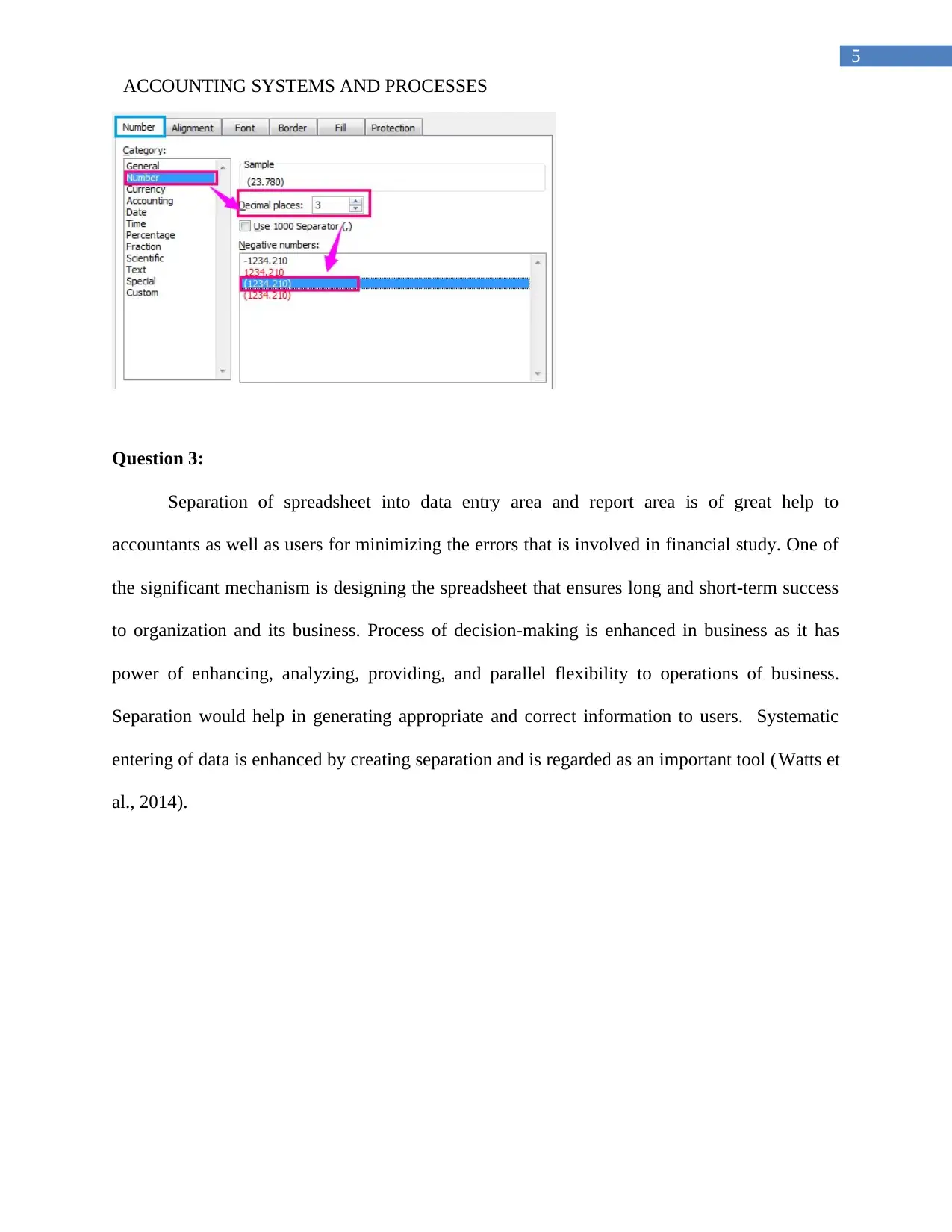
5
ACCOUNTING SYSTEMS AND PROCESSES
Question 3:
Separation of spreadsheet into data entry area and report area is of great help to
accountants as well as users for minimizing the errors that is involved in financial study. One of
the significant mechanism is designing the spreadsheet that ensures long and short-term success
to organization and its business. Process of decision-making is enhanced in business as it has
power of enhancing, analyzing, providing, and parallel flexibility to operations of business.
Separation would help in generating appropriate and correct information to users. Systematic
entering of data is enhanced by creating separation and is regarded as an important tool (Watts et
al., 2014).
ACCOUNTING SYSTEMS AND PROCESSES
Question 3:
Separation of spreadsheet into data entry area and report area is of great help to
accountants as well as users for minimizing the errors that is involved in financial study. One of
the significant mechanism is designing the spreadsheet that ensures long and short-term success
to organization and its business. Process of decision-making is enhanced in business as it has
power of enhancing, analyzing, providing, and parallel flexibility to operations of business.
Separation would help in generating appropriate and correct information to users. Systematic
entering of data is enhanced by creating separation and is regarded as an important tool (Watts et
al., 2014).
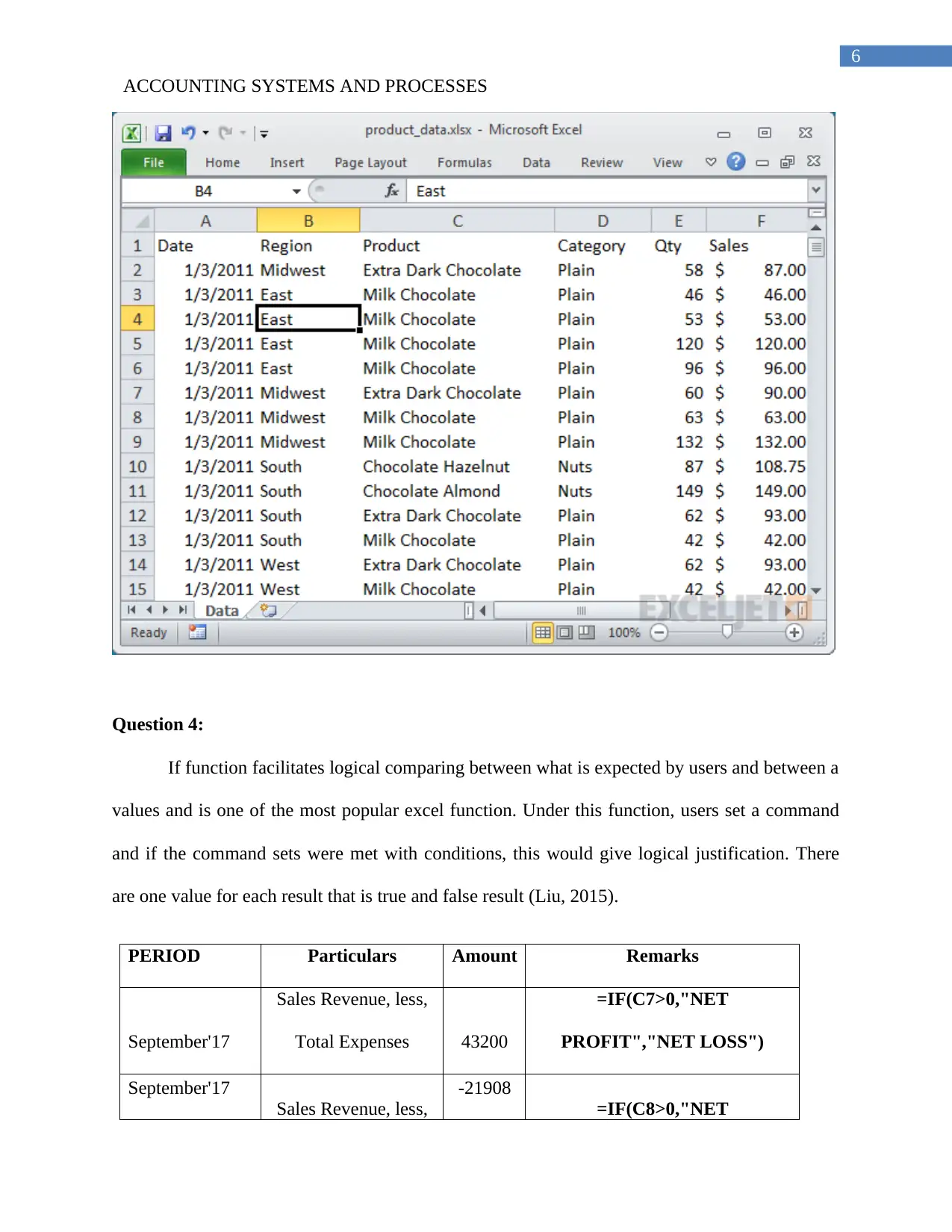
6
ACCOUNTING SYSTEMS AND PROCESSES
Question 4:
If function facilitates logical comparing between what is expected by users and between a
values and is one of the most popular excel function. Under this function, users set a command
and if the command sets were met with conditions, this would give logical justification. There
are one value for each result that is true and false result (Liu, 2015).
PERIOD Particulars Amount Remarks
September'17
Sales Revenue, less,
Total Expenses 43200
=IF(C7>0,"NET
PROFIT","NET LOSS")
September'17
Sales Revenue, less,
-21908
=IF(C8>0,"NET
ACCOUNTING SYSTEMS AND PROCESSES
Question 4:
If function facilitates logical comparing between what is expected by users and between a
values and is one of the most popular excel function. Under this function, users set a command
and if the command sets were met with conditions, this would give logical justification. There
are one value for each result that is true and false result (Liu, 2015).
PERIOD Particulars Amount Remarks
September'17
Sales Revenue, less,
Total Expenses 43200
=IF(C7>0,"NET
PROFIT","NET LOSS")
September'17
Sales Revenue, less,
-21908
=IF(C8>0,"NET
⊘ This is a preview!⊘
Do you want full access?
Subscribe today to unlock all pages.

Trusted by 1+ million students worldwide
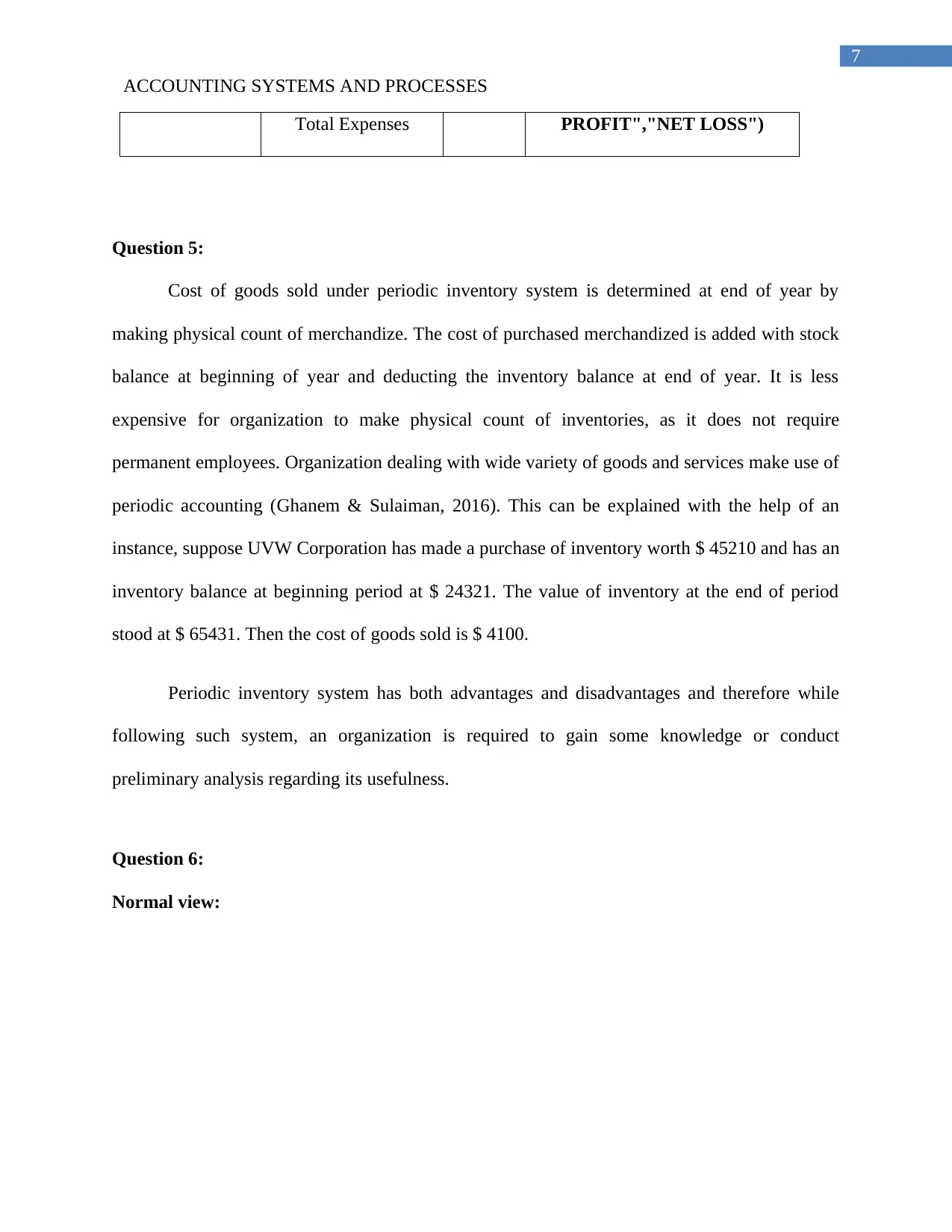
7
ACCOUNTING SYSTEMS AND PROCESSES
Total Expenses PROFIT","NET LOSS")
Question 5:
Cost of goods sold under periodic inventory system is determined at end of year by
making physical count of merchandize. The cost of purchased merchandized is added with stock
balance at beginning of year and deducting the inventory balance at end of year. It is less
expensive for organization to make physical count of inventories, as it does not require
permanent employees. Organization dealing with wide variety of goods and services make use of
periodic accounting (Ghanem & Sulaiman, 2016). This can be explained with the help of an
instance, suppose UVW Corporation has made a purchase of inventory worth $ 45210 and has an
inventory balance at beginning period at $ 24321. The value of inventory at the end of period
stood at $ 65431. Then the cost of goods sold is $ 4100.
Periodic inventory system has both advantages and disadvantages and therefore while
following such system, an organization is required to gain some knowledge or conduct
preliminary analysis regarding its usefulness.
Question 6:
Normal view:
ACCOUNTING SYSTEMS AND PROCESSES
Total Expenses PROFIT","NET LOSS")
Question 5:
Cost of goods sold under periodic inventory system is determined at end of year by
making physical count of merchandize. The cost of purchased merchandized is added with stock
balance at beginning of year and deducting the inventory balance at end of year. It is less
expensive for organization to make physical count of inventories, as it does not require
permanent employees. Organization dealing with wide variety of goods and services make use of
periodic accounting (Ghanem & Sulaiman, 2016). This can be explained with the help of an
instance, suppose UVW Corporation has made a purchase of inventory worth $ 45210 and has an
inventory balance at beginning period at $ 24321. The value of inventory at the end of period
stood at $ 65431. Then the cost of goods sold is $ 4100.
Periodic inventory system has both advantages and disadvantages and therefore while
following such system, an organization is required to gain some knowledge or conduct
preliminary analysis regarding its usefulness.
Question 6:
Normal view:
Paraphrase This Document
Need a fresh take? Get an instant paraphrase of this document with our AI Paraphraser
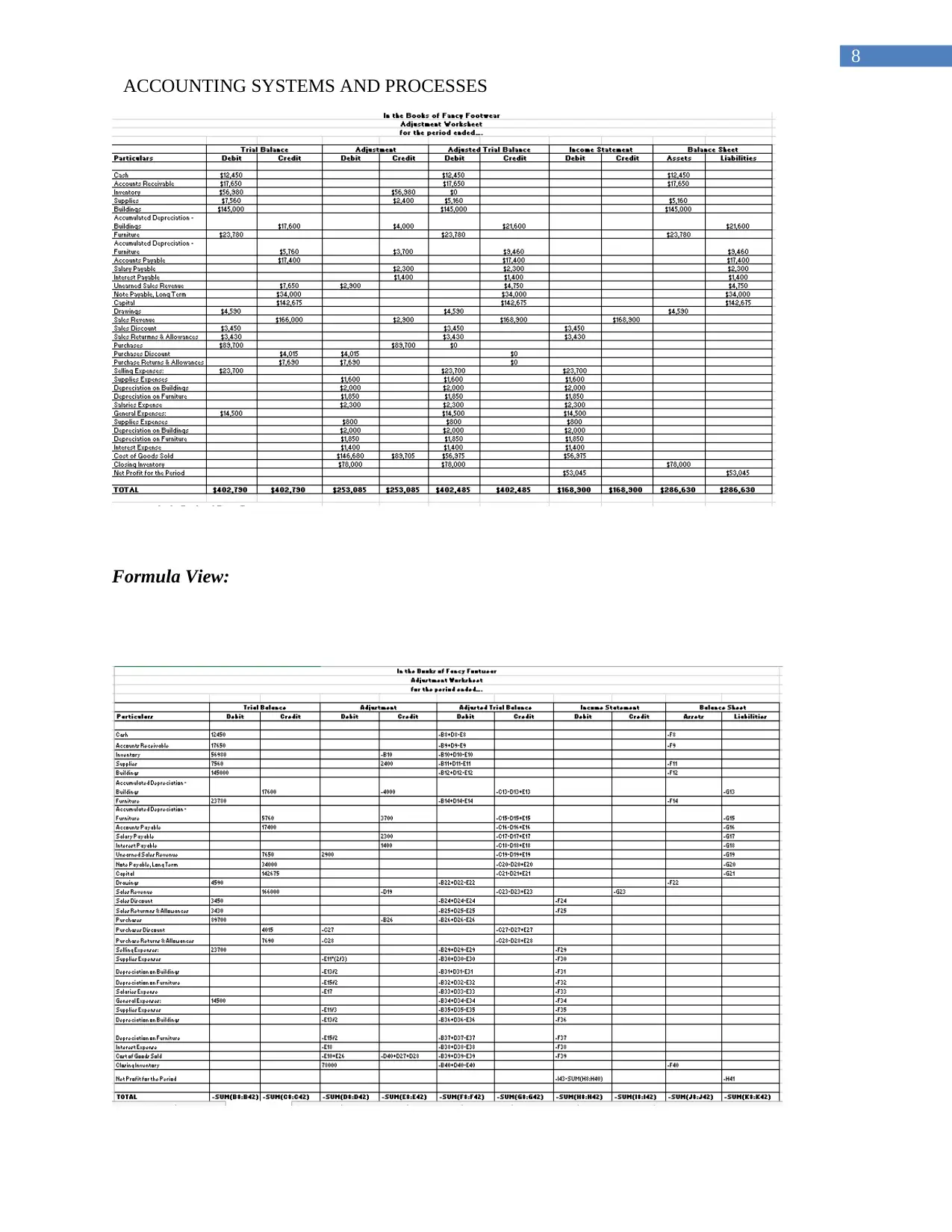
8
ACCOUNTING SYSTEMS AND PROCESSES
Formula View:
ACCOUNTING SYSTEMS AND PROCESSES
Formula View:
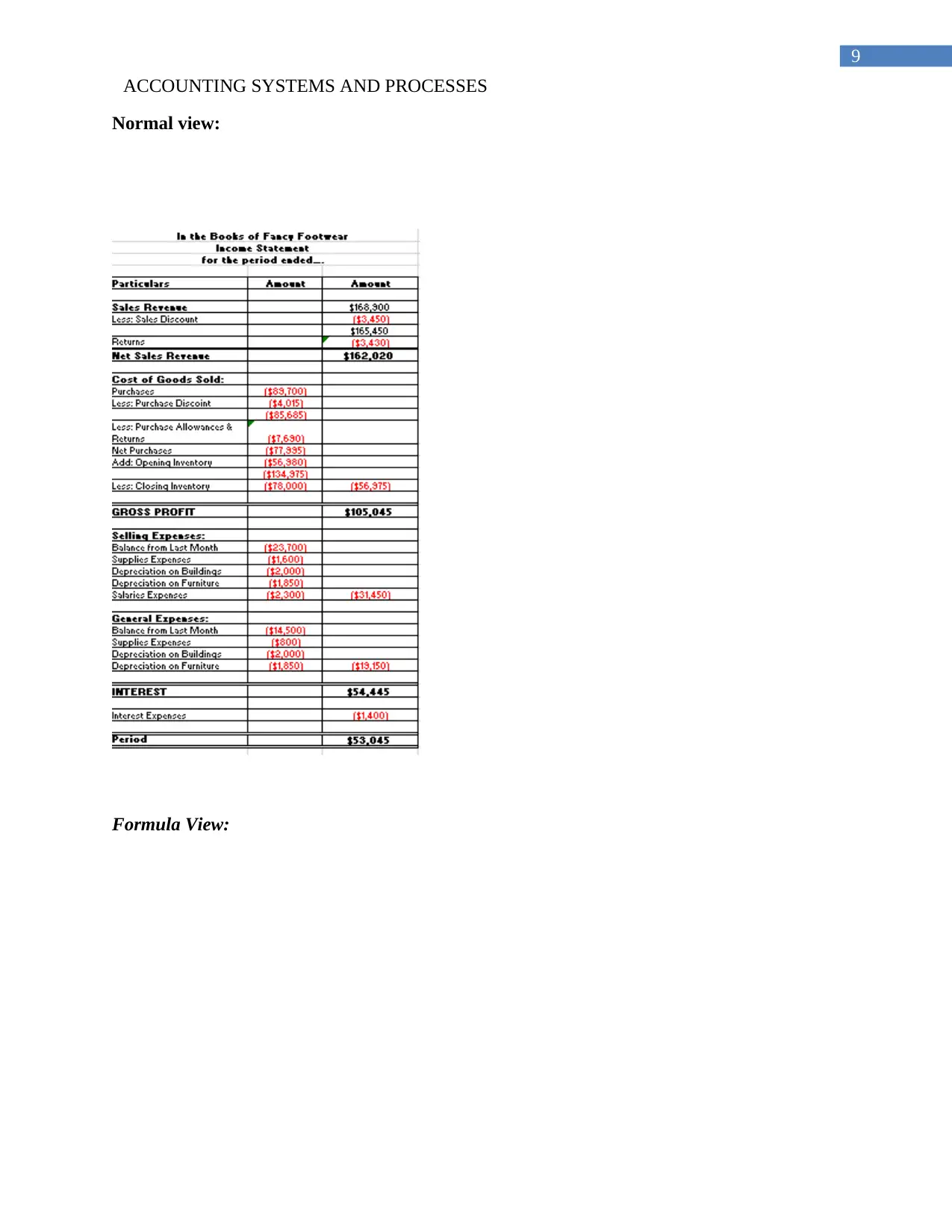
9
ACCOUNTING SYSTEMS AND PROCESSES
Normal view:
Formula View:
ACCOUNTING SYSTEMS AND PROCESSES
Normal view:
Formula View:
⊘ This is a preview!⊘
Do you want full access?
Subscribe today to unlock all pages.

Trusted by 1+ million students worldwide
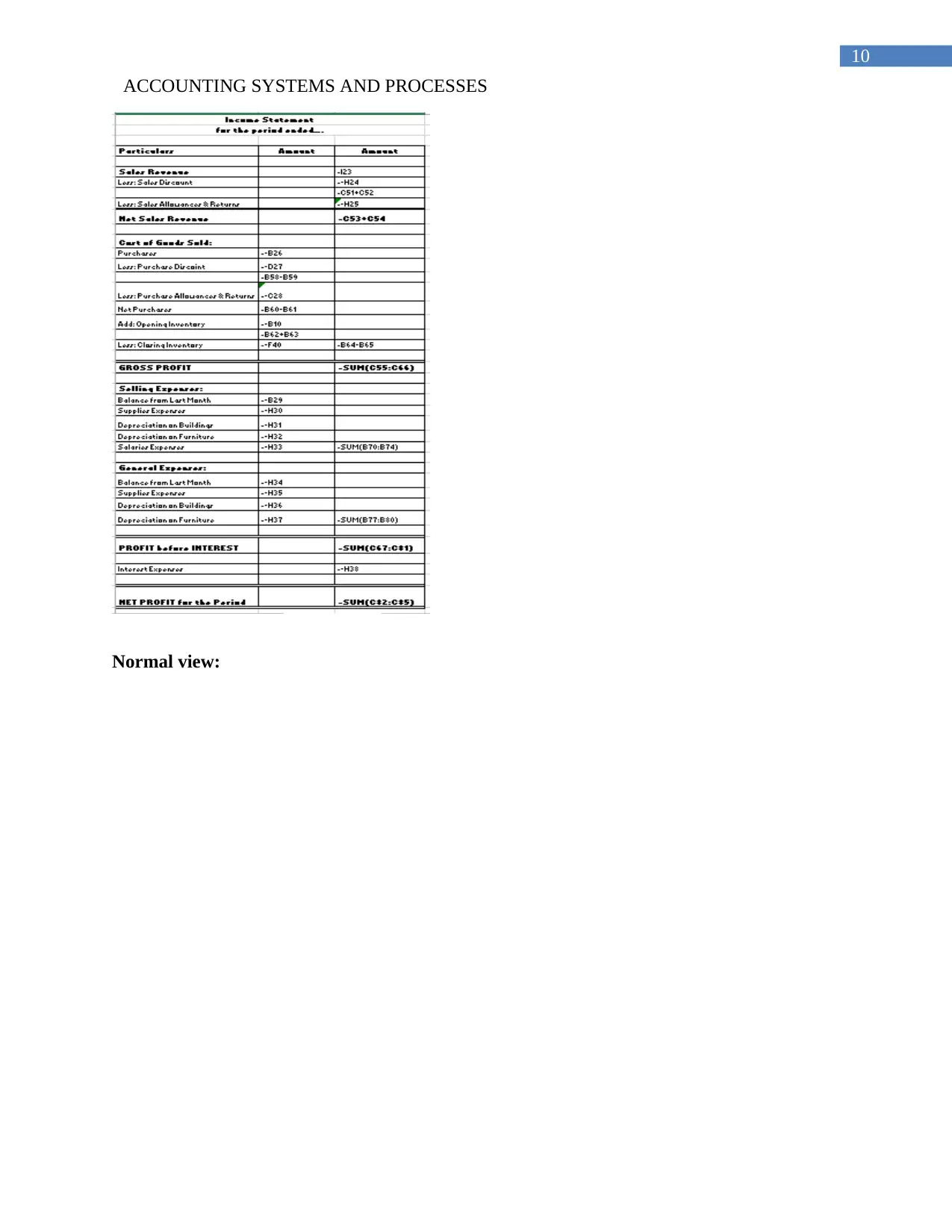
10
ACCOUNTING SYSTEMS AND PROCESSES
Normal view:
ACCOUNTING SYSTEMS AND PROCESSES
Normal view:
Paraphrase This Document
Need a fresh take? Get an instant paraphrase of this document with our AI Paraphraser
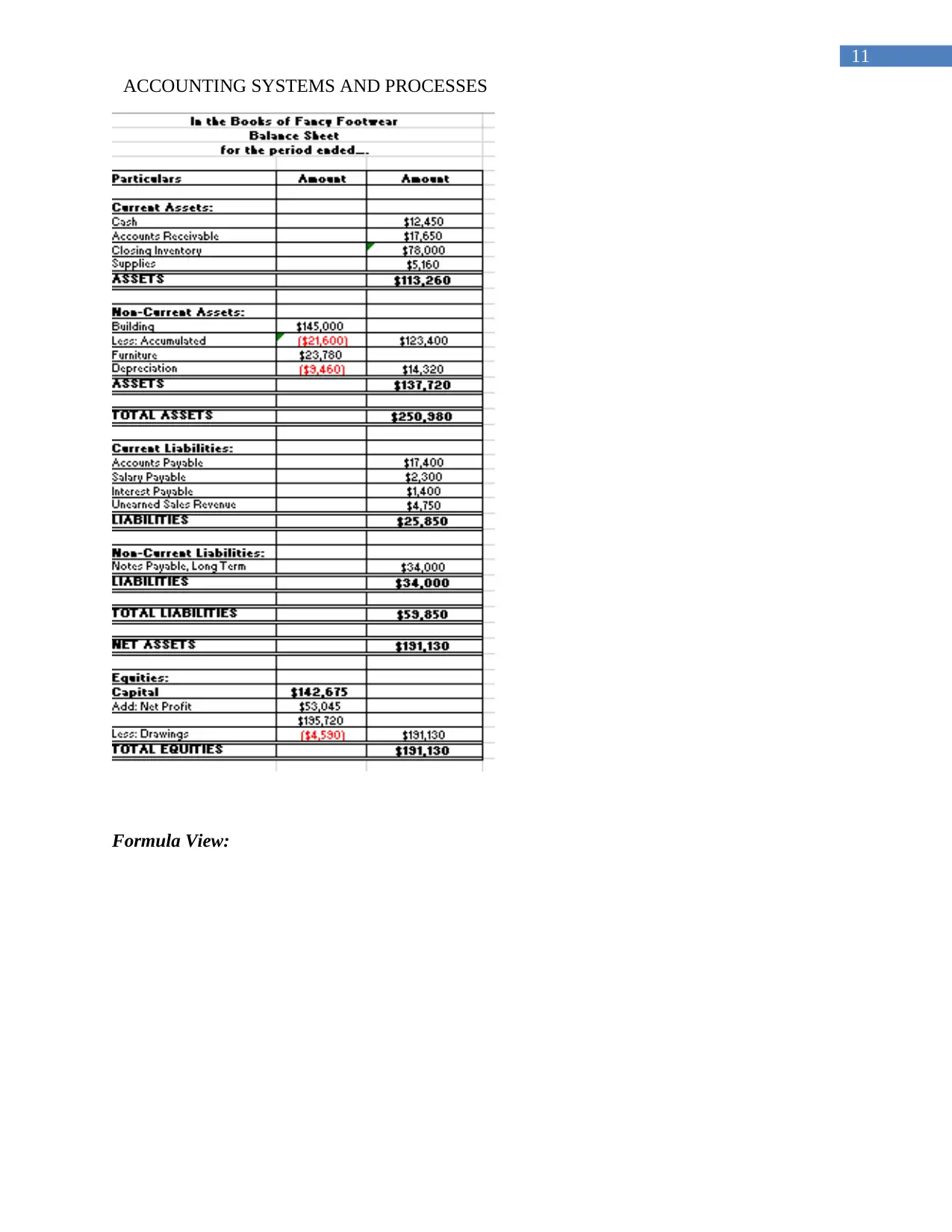
11
ACCOUNTING SYSTEMS AND PROCESSES
Formula View:
ACCOUNTING SYSTEMS AND PROCESSES
Formula View:
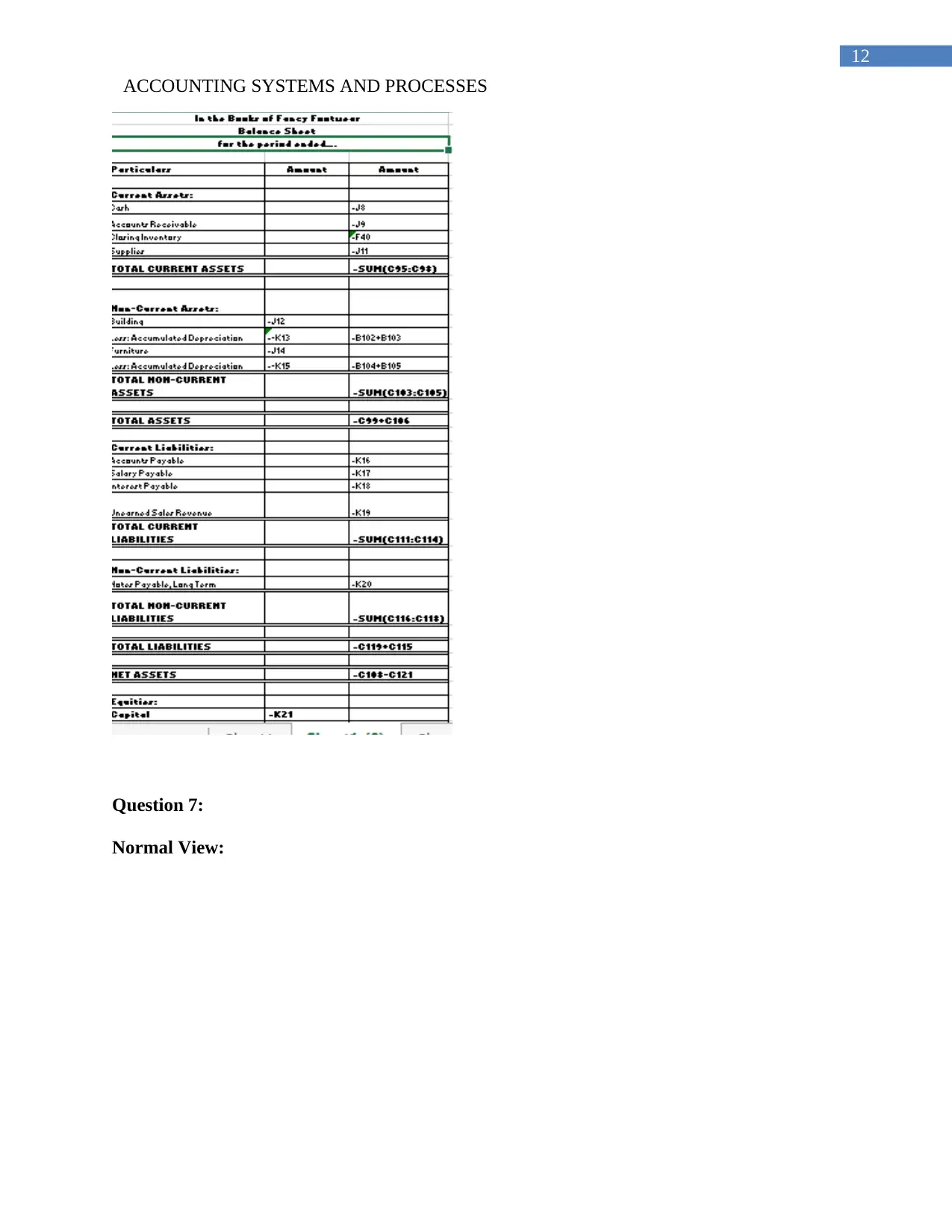
12
ACCOUNTING SYSTEMS AND PROCESSES
Question 7:
Normal View:
ACCOUNTING SYSTEMS AND PROCESSES
Question 7:
Normal View:
⊘ This is a preview!⊘
Do you want full access?
Subscribe today to unlock all pages.

Trusted by 1+ million students worldwide
1 out of 29
Related Documents
Your All-in-One AI-Powered Toolkit for Academic Success.
+13062052269
info@desklib.com
Available 24*7 on WhatsApp / Email
![[object Object]](/_next/static/media/star-bottom.7253800d.svg)
Unlock your academic potential
Copyright © 2020–2025 A2Z Services. All Rights Reserved. Developed and managed by ZUCOL.





